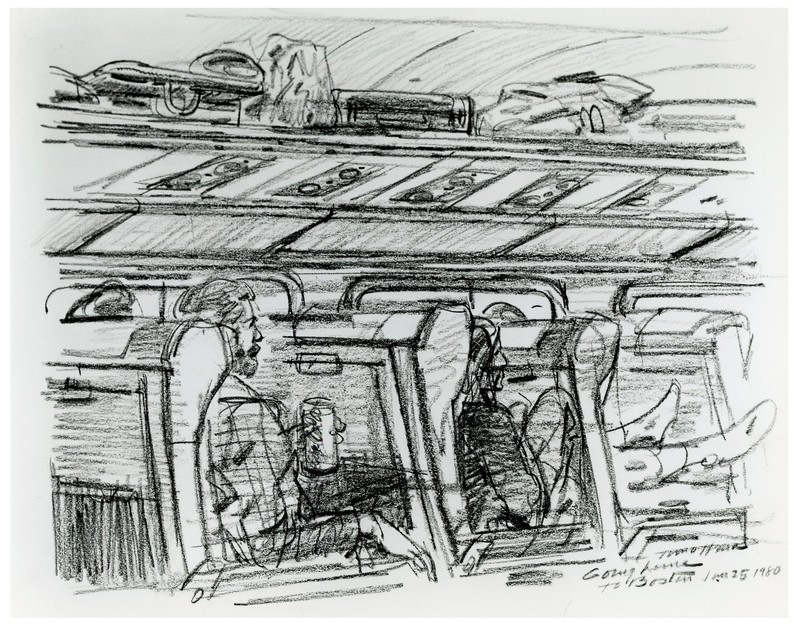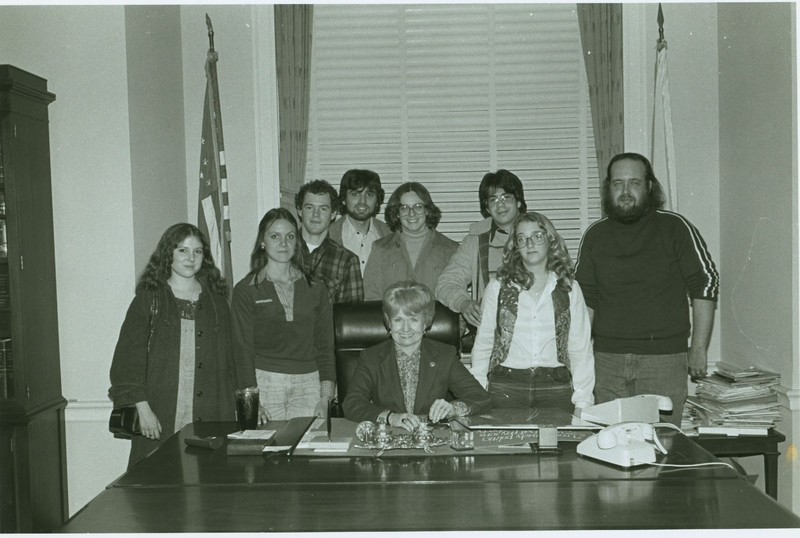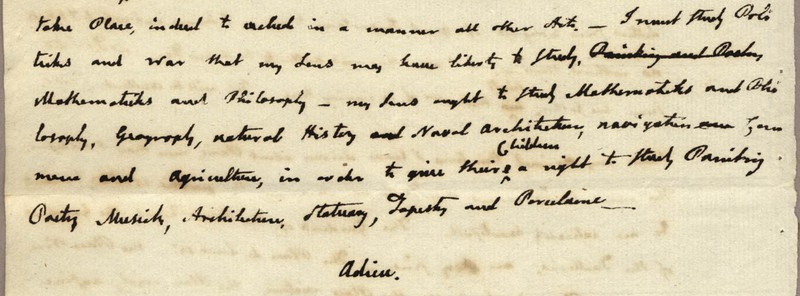The Art of Lobbying: MassArt Students in Washington, D.C.
On Monday, January 21, 1980, thirty-seven students and a handful of faculty traveled to Washington, D.C., to spend four days drawing and photographing House and Senate members representing Massachusetts constituencies. Besides these Massachusetts representatives, First Lady Rosalynn Carter also “sat” for her portrait, in the White House “Blue Room.”
The delegation of MassArt artists traveled to and from D.C. by train, depicted in the two images [below].
In this photo from the Tuesday January 22, 1980 Boston Globe, one can see several participants from the D.C. lobbying trip en route the morning of their departure to catch their D.C. train at Boston’s South Station. Gary Davis, one of the participating students, recently identified who was who, marking the article up with red numbers:
- Teresa Flavin
- Bob Seamon (not sure if his last name is spelled correctly)
- Vinny DiGiulio
- Diana Shonk
- Herb Rich
- Professor Tom O’Hara
- Gary Davis
Four days later, one sees them depicted again, in a lively pencil sketch by much loved Illustration Professor Tom O’Hara. Seated in their train car – with their feet up and in a more relaxed mood – the MassArt contingent of artists is portrayed by O’Hara on their way “home,” following four full days of “lobbying” in D.C.
MassArt students stand behind Congresswoman Margaret Heckler, who served in the U.S. House of Representatives from 1967 to 1983, serving Massachusetts’ 10th District. Later, Heckler served as U.S. Secretary of Health and Human Services, from 1983-1985, and, in 1986, became the U.S. Ambassador to Ireland for three years.
An upside down placard is visible near the phone on Congresswoman Heckler’s desk. The wording on that placard is an extract from a letter that John Adams, second President of the United States, wrote to his wife Abigail from France, on May 12, 1780. The placard was possibly presented to Congresswoman Heckler by someone from the MassArt contingent of artists, as a lobbying ploy to underscore the longstanding value of the fine arts in American culture. President Adams’ letter to Abigail tells of the sacrifices successive generations must make to ensure that their grandchildren will be free to attend to their creative thinking, imaginative capabilities and fine arts pursuits.
Transliteration of John Adams letter to his wife Abigail, post 12 May 1780, from Paris:
… I must study Politicks and War that my sons may have liberty to study
Painting and PoetryMathematicks and Philosophy. My sons ought to study Mathematicks and Philosophy, Geography, Natural History, Naval Architecture, navigation, Commerce and Agriculture, in order to give their ↑children a right to study Painting, Poetry, Musick, Architecture, Statuary, Tapestry and Porcelaine.Adieu



